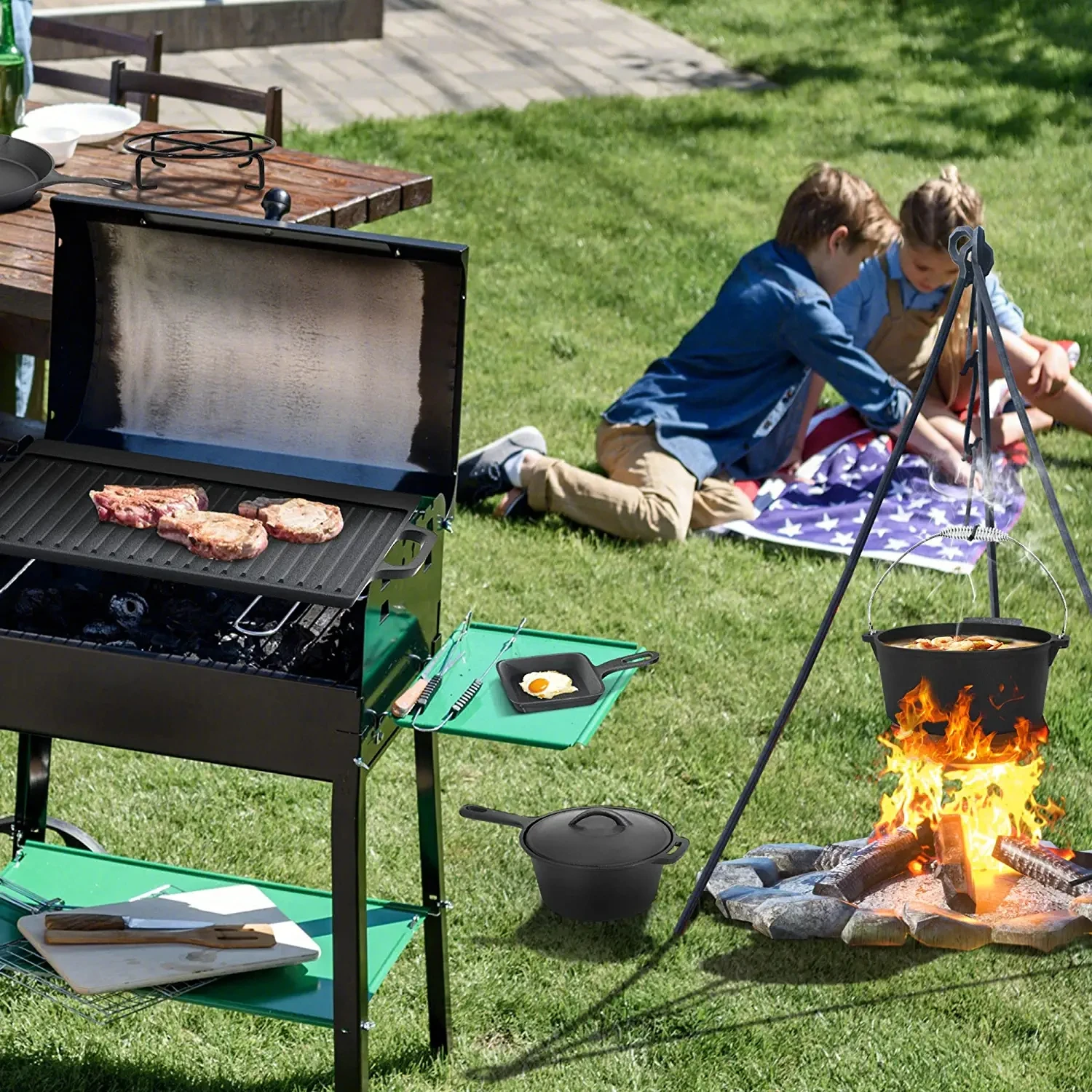
curing cast iron pan
Curing Cast Iron Pans A Timeless Culinary Tradition
Curing or seasoning a cast iron pan is an essential practice that transforms a raw piece of cast iron into a durable, non-stick cooking surface. This time-honored technique not only enhances the performance of the cookware but also prolongs its lifespan, making it a treasured item in kitchens around the world. Let’s dive into the intricacies of curing cast iron pans and why this traditional method remains relevant today.
Understanding Cast Iron
Cast iron is celebrated for its excellent heat retention and distribution properties, making it a favorite among chefs and home cooks alike. However, raw cast iron is porous and susceptible to rust, which is why curing or seasoning is crucial. The process involves applying oil to the pan and heating it, allowing the oil to polymerize and form a hard, protective layer. This layer acts as a barrier against moisture and food particles, preventing rust and creating a natural non-stick surface.
The Curing Process
Curing a cast iron pan is straightforward and can be done with a few simple steps
1. Cleaning Start by scrubbing the pan with warm, soapy water to remove any factory residues or dirt. Use a mild abrasive pad if needed, but avoid metal scrubbers that could damage the surface. Rinse thoroughly and dry completely to avoid rust.
2. Applying Oil Choose a suitable oil for seasoning. Flaxseed oil, grapeseed oil, and vegetable oils are popular choices due to their high smoke points. Pour a small amount of oil into the pan and use a paper towel or cloth to spread it evenly across the interior surface, including the sides and handle. Wipe off any excess oil to prevent a sticky residue.
curing cast iron pan

3. Heating Preheat your oven to around 400°F (204°C). Place the pan upside down on the top rack of the oven, with a baking sheet on the bottom rack to catch any dripping oil. Bake the pan for one hour. This high temperature allows the oil to bond to the iron, creating a durable layer.
4. Cooling After an hour, turn off the oven and let the pan cool inside. This gradual cooling process enhances the seasoning layer, making it less likely to crack or flake.
5. Repeating For optimal results, it is advisable to repeat the seasoning process two to three times. Each layer will build upon the previous one, resulting in a smooth, glossy finish.
Maintenance of Cast Iron Pans
Once cured, maintaining the non-stick surface of a cast iron pan is relatively simple. After cooking, avoid using soap; instead, rinse with hot water and use a soft brush or sponge to scrub off any food remnants. For tougher residues, a mixture of coarse salt and water can act as a gentle abrasive. After cleaning, dry the pan thoroughly and apply a thin layer of oil to keep the surface hydrated and prevent rust.
Conclusion
Curing a cast iron pan is more than just a practical task; it’s a connection to a culinary tradition that spans generations. By properly seasoning and maintaining a cast iron pan, cooks not only ensure superior culinary results but also foster a piece of cookware that can last a lifetime, often becoming a beloved family heirloom. As more people turn to sustainable cooking practices, the efficacy and longevity of cast iron make it a cherished tool in any kitchen. Embracing the art of curing cast iron pans can lead to countless delicious meals and an enriched cooking experience.
-
Season Cast Iron Perfectly with GPT-4 Turbo TipsNewsAug.01,2025
-
High Quality Cast Iron Cookware - Baixiang County Zhongda MachineryNewsAug.01,2025
-
Premium Cast Iron Pan: Durable & Perfect HeatNewsAug.01,2025
-
High Quality Kitchen Durable Black Round Cast Iron Cookware Pancake Crepe Pan-Baixiang County Zhongda Machinery Manufacturing Co., Ltd.NewsAug.01,2025
-
Cast Iron Cookware - Baixiang County Zhongda Machinery | Nonstick, Heat ResistanceNewsAug.01,2025
-
High Quality Kitchen Durable Black Round Cast Iron Cookware - Baixiang County Zhongda Machinery | Non-Stick, Heat Retention, DurableNewsJul.31,2025


